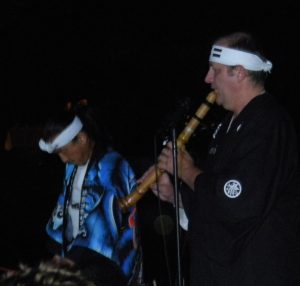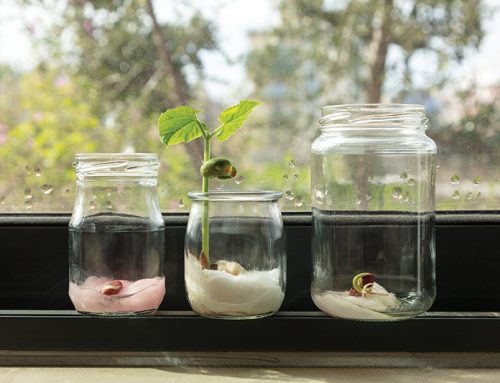Grace in the Garden
By J. Adam Burch and Stacey Lane
We have portable devices to remind us of our schedules and huge monuments and a vast literature to remind us of our history. But, someone once said that it is a garden that reminds us of our most primal relationship as humans–to nature. No race, nationality or belief can undermine our essential connection to all natural things.
Any contemplation of nature’s seemingly random and chaotic forms gradually begins to reveal patterns of beauty that can only be the result of timeless adherence to universal or divine laws. Nature is best appreciated in sunlight and springtime, and the annual Japanese Friendship Garden Springtime Festival offers a splendid opportunity to be reminded of our in severable relationship with nature, including all our planet’s inhabitants. Spring is the time to celebrate art and music as well as plant cultivation. At the Japanese Friendship Garden, the unique contributions of Eastern cultures to these activities are on display for the edification and delight of Arizonans.
Phoenix and Himeji, Japan, participate in a Sister City program that promotes business, governmental, cultural and educational exchanges. The vision of cultural sharing to enhance international goodwill and mutual understanding is given material reality in the Friendship Garden. The sister-city relationship was established in 1976 and the Garden was proposed in 1987 when a delegation from Phoenix visited Japan in 1988 to view several gardens. In 1988 and 1990, a design team of landscape architects from Himeji visited Phoenix to assist in the design.
The garden combines the knowledge and skills of both teams to create a setting that is adapted to the demands of our desert environment. The result of this collaboration–Ro Ho En–is a pastoral enclave for anyone who seeks to heal the soul, meditate or seek harmony with the natural world. Located adjacent to the Margaret T. Hance Park on 3rd Avenue in downtown Phoenix, the Friendship Garden was opened to the public in 2002.
The three-and-a-half-acre masterpiece of Japanese horticulture is traversed by stone pathways that lead explorers through a relaxing soundscape of running water, birds and bells, as well as a visually exotic landscape. The focal point of the garden and the fulcrum of it balance is a 14-foot waterfall that captivates the viewer as it divides into two. The falls are also illuminated in the evenings and present a novel visual experience from any distinctive vantage point. The imposing Shachi Monument is another of the Garden’s highlights. This stone sculpture symbolizes Japan’s largest and best-preserved castle, Shira Sagi Jo (“White Heron Castle”).
Located at the far side of the Garden away from the main entrance, the intimate Musoan (“Dream of the Future”) tea house exemplifies the Japanese love for the use of natural materials in architecture.
Every year, festivities, classes, workshops and ceremonies beckon the citizens of Phoenix to visit the garden and learn its lessons. “Haru in the Garden” is a colorful, cultural and artistic event that celebrates the sights and sounds of spring. The garden is beautifully and delicately lit to complement the unique and inspiring performances of music, percussion and dance along with the exquisite artworks arranged in the Japanese garden. Especially engaging is the Kimono and Hina doll display. Japanese bamboo flutes, fire dancers, Taiko drumming ensembles, and traditional spring-themed tea ceremony demonstrations are just a few of the featured performances.
Executive Director, Reiko Yasui Reavis shares that over 600 people attended the Haru in the Garden event this year and it continues to grow. “We added lanterns in the mountain area, the Tea Ceremony was very popular and it sold out within two hours, and the Fire Dance on the bridge was a great finale,” Ms. Reavis said.
Performances of Tibetan bowl playing has become an increasingly popular attraction at the Spring festival. “This year we heard many people say that they felt a true need to hear the bowls live, rather than as a want or an entertainment,” recounts Kenton Knepper of Bowlvana. “It is exciting to hear how deeply people connect with my bowl playing. I am honored to be a part of this event, and to see how much it has grown over the years.”
Other performances came at the end of the evening by a popular Japanese Taiko Rock n’ Roller, Ken Koshio. Koshio offered a unique fusion of Japanese drums and Rock ‘n’ Roll balancing two very dynamic, different worlds in a spiritual performance. The evening closed with a two fire dancers captivated guests at the center bridge as the fire began to dance. “The flames in the darkness were mesmerizing. It seemed to be kindled by the special event, kind of like a friendship caught on fire,” attendee Alan Rasmussen shared.
Apart from the special Festival schedule, the Friendship Garden has on-going programs and exhibits throughout the year, such as exhibits featuring photography, masks, sculpture, prints and pottery. Lecture series and workshops, such as the Sogetsu Ikebana Workshops and the Annual Anime Drawing Contest, contribute to the celebration and sharing of the culture and heritage of Japan. Additionally, a number of volunteer programs provide opportunities for further learning and engagement with the Garden with instruction in Japanese gardening techniques. Training is also provided for docents who give guided tours and assist at special events, to include Children’s Day just around the corner.
The Friendship Garden is open from October through May, 10 a.m. to 3 p.m., Tuesday through Sunday. For class listings, garden lectures, public and private tea ceremonies and special events visit; www.japanesefriendshipgarden.org or call (602) 256-3204 or (602) 274-8700.
To learn more about Kenton Knepper of Bowlvana, visit; www.bowlsounds.com
To learn more about Ken Koshio, visit; www.KenKoshio.com ~ upcoming performances on Saturday, April 2nd – at the Tempe Center for the Arts – showtimes; 2 and 7 p.m.
Photos by; Wilson Wyatt III and Stacey Lane
To learn more about Wilson Wyatt III visit; https://www.facebook.com/wilsonwyattstudios












